
Guidance for minimum mask use and
additional PPE selection in healthcare
settings: February – May 2023
This guidance has been developed according to current transmission rates of
COVID-19 and other respiratory viruses in New Zealand.
Presently in New Zealand there is ongoing but low-level community transmission of
COVID-19 and low-level of community transmission of other respiratory viruses. The use of
masks within the patient care environment continues to be a national focus at this stage
of the pandemic, in order to help protect some of our most vulnerable people and those
who are at higher risk of severe il ness from COVID-19.
Mask use by healthcare workers is one of a number of infection prevention and control
measures that limit the spread of COVID-19 and other respiratory diseases in healthcare.
However, mask use should always be considered in conjunction with other interventions.
Adhering to standard and transmission-based precautions for all patient/client and
resident care, having clean indoor air through good ventilation, access to testing, having
occupational health processes that promote staff vaccination and enable staff to stay
home from work when unwel are al important measures that can reduce the spread of
COVID-19 and other respiratory diseases in healthcare.
This guidance provides the minimum recommendations for mask use for all employees,
volunteers and contractors of healthcare facilities, and patients/clients and visitors of
healthcare settings.
This guidance also assists primary and community health and disability care workers in
selecting the additional PPE required fol owing a risk assessment for acute respiratory
infections, including COVID-19.
This guidance wil be reviewed and updated according to changes in the national
situation, current epidemiology and other factors (e.g. facility-based outbreak, staff
resourcing).
Guidance on mask-wearing for healthcare settings wil be reviewed prior to winter 2023.
Guidance for minimum mask use and additional PPE selection in healthcare settings
Definitions
Clinical zone/patient care zone
A clinical zone/patient care zone is defined as:
• An area where a healthcare worker is providing care, assessment, expertise or
therapy to a patient/client e.g., assessment or treatment room, patient room,
procedure room or during patient transport
• Patient/resident rooms where care is being delivered in a home-based or
residential care setting
Mask recommendations glossary:
•
Required: A mask must be worn in this situation. This is usually due to a public
health order requiring the use of mask, or due to best practice evidence as part of
transmission-based precautions.
•
Recommended: A mask is strongly advised to be worn in these situations as the
balance of evidence favours mask use to reduce transmission.
•
Encouraged: Wearing a mask is at the choice of the staff member.
Note – any healthcare worker who chooses to wear a medical mask or P2/N95 particulate
respirator for respiratory protection while anywhere on a healthcare facility for their own
protection may do so. This may be due to their own health needs and this choice should
be facilitated.
Key updates
1. In all healthcare settings
Patients/clients
• Patient/client has symptoms suggestive of an acute respiratory virus infection:
Medical mask is recommended for patient to wear, provided this is tolerated by the
patient/client.
• In al other situations: use of medical mask is encouraged when in waiting rooms or
non-inpatient areas shared with others who may be unwel .
Visitors/support people
• Advice for visitors/ support people of patients at healthcare facilities is unchanged
and is directed by public health order: Visitors/support people at all healthcare
facilities are
required to wear a mask. Those with mask exemptions should fol ow
the local facility policy.
2. Pharmacies (except those in supermarkets)
The advice for pharmacies is unchanged and is directed by public health order:
• Al staff are recommended to wear a medical mask when in a public facing area or
when providing patient/client care
Guidance for minimum mask use and additional PPE selection in healthcare settings
• All members of the public entering a pharmacy are required to wear a medical
mask, whether they are a patient/client or consumer/visitor
3. Community-based healthcare settings which provide acute care
This advice applies to community-based healthcare settings which provide acute care to
patients/clients who may present with acute respiratory infections:
• Primary and community care (e.g., general practice)
• Iwi and Pacific healthcare providers
• Oral health services
• Urgent care services (e.g., after-hours clinics, urgent care clinics, ambulance
workers)
Clinical staff (nursing, medical, allied health staff)
• Providing care to patients with symptoms of acute respiratory virus infections
(including suspected or confirmed COVID-19):
mask use required. Follow
transmission-based precautions (usually this wil mean P2/N95 particulate
respirator). Where practical to do so, streaming of patients according to risk of
acute respiratory virus infection is recommended.
• Providing care to patients in other situations: medical mask recommended in other
care situations.
o Note – in very low risk situations where use of mask may impact negatively
on care delivery, clinical judgment may be used to remove masks but is
recommended only after a risk assessment is performed by the clinician
and agreed to by patient.
• Staff only zones and transit areas: medical mask use is encouraged, especially in
situations where ventilation is not optimal.
Non-clinical staff (administrative, clinical support, facilities)
• Reception areas/waiting rooms: medical mask use is encouraged in areas where
staff will be in prolonged contact with public or in open waiting rooms
• Staff only zones and transit areas: mask use is encouraged, especially in situations
where ventilation is not optimal
4. Other community-based healthcare settings
This advice applies other community-based healthcare settings including:
• Disability support services
• Residential care (aged and disability related)
• Diagnostic services (e.g., diagnostic laboratories, col ection rooms, radiology
services)
• Allied health services (e.g., Dietetics, Occupational therapy, Osteopathy,
Physiotherapy, Podiatry, Acupuncture treatment, Audiology services, Chiropractic
treatment)
Guidance for minimum mask use and additional PPE selection in healthcare settings
Clinical staff (nursing, medical, allied health staff)
• Providing care to patients with symptoms of acute respiratory virus infections
(including suspected or confirmed COVID-19):
fol ow transmission-based
precautions (usually this wil mean P2/N95 particulate respirator)
• Providing care to patients in other care situations: medical mask encouraged
o Note - in very low risk situations where use of mask may impact negatively
on care delivery, clinical judgment may be used to remove masks but is
recommended only after a risk assessment is performed by the clinician
and agreed to by patient.
• Staff only zones and transit areas: medical mask use is encouraged, especially in
situations where ventilation is not optimal
Non-clinical staff (administrative, clinical support, facilities)
• Reception areas/waiting rooms/shared resident or client areas: Mask use is
encouraged in areas where staff wil be in prolonged contact with public or in open
waiting rooms
• Staff only zones and transit areas: mask use is encouraged, especially in situations
where ventilation is not optimal or where staff wil be in prolonged contact with
public
5. Hospitals and other secondary care settings
This advice applies to hospitals and other secondary care settings (e.g., hospice). It is
intended to provide guidance on safe minimum practice and local requirements may be
added by healthcare facilities based on local situations (epidemiology, facility-based
outbreak, staff resourcing).
Clinical staff (nursing, medical, allied health staff)
• Providing care to patients with confirmed COVID- 19 or patients with symptoms of
acute respiratory virus infections (including suspected COVID-19):
mask use
required. Follow transmission-based precautions (usual y this wil mean P2/N95
particulate respirator).
• Providing care to patients in other situations: medical mask recommended in other
care situations.
o Note 1: - in units where there is higher/more frequent risk of exposure,
including acute assessment units/emergency departments, specialist units
involving procedures on upper respiratory tract (bronchoscopy, upper GI
endoscopy, ENT airway procedures), or other higher risk scenarios, units
may recommend N95/P2 particulate respirator use based on local situation
or as per of normal clinical practice.
o Note 2: – in very low risk situations where use of mask may impact
negatively on care delivery, clinical judgment may be used to remove
masks but is recommended only after a risk assessment is performed by
the clinician and agreed to by patient.
Guidance for minimum mask use and additional PPE selection in healthcare settings
• Staff only zones and transit areas: medical mask use is encouraged, especially in
situations where ventilation is not optimal.
Non-clinical staff (administrative, clinical support, facilities)
• Reception areas/waiting rooms: Mask use is encouraged in areas where staff will
be in prolonged contact with public or in open waiting rooms
• Staff only zones and transit areas: mask use is encouraged, especially in situations
where ventilation is not optimal or where staff wil be in prolonged contact with
public
• Staff providing patient transport services (e.g., orderlies, drivers, aeromedical
transfer staff, ambulance transport staff): mask use is recommended if working
within patient care zone or as part of transmission-based precautions
Fit testing/ fit checking a P2/N95 particulate respirator
Fit testing is a procedure through either a qualitative or quantitative test to ‘match’ the
right P2/N95 particulate respirator with the wearers face shape to ensure maximum
protection.
Fit testing is strongly recommended for al healthcare workers who wear a P2/N95 at least
once, and then repeated if any major changes to face shape occur or if available
products change. Health and Safety recommendations regarding frequency of fit testing
requirements are subject to review.
Fit checking /user seal check is a ‘quick check’ method used by the wearer to ensure the
respirator is properly positioned on their face and there is a tight seal between the
respirator and face. A fit check/user seal check must be done every time a P2/N95
particulate respirator is put on.
In situations where fit testing has not yet been carried out and a P2/N95 particulate
respirator is recommended for use,
refer to our interim guidance.
Guidance for minimum mask use and additional PPE selection in healthcare settings
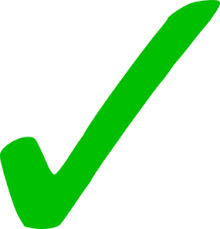


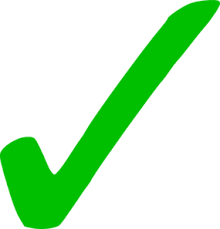

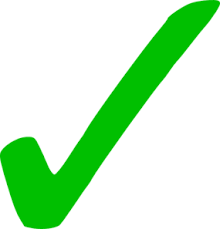
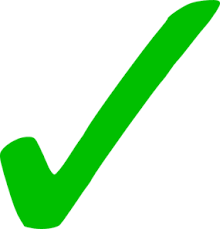

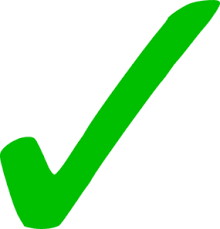
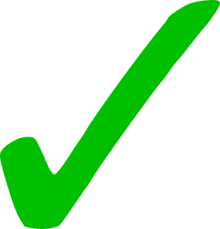 Recommendations for minimum PPE requirements based on risk assessment
Patient COVID-19 risk factors
Precautions required
Recommendations for minimum PPE requirements based on risk assessment
Patient COVID-19 risk factors
Precautions required
Hand
Medical
P2/N95
Eye
Fluid
Gloves
hygiene
mask5, 6
respirator5,4 protection
resistant
gown/apron
No acute respiratory
Masks for
As per
As per
As per
infection (ARI) symptoms
3 L
HCW as per
standard
standard
standard
STANDARD
AND no recognised COVID-
R AL
district
precautions
precautions
precautions
19 epidemiological risk1
O
policy6
S F
ARI without COVID-19
N
As per
As per
O
STANDARD
epidemiological risk1 (test
TI
standard
standard
+
for other respiratory viruses
AU
precautions
precautions
DROPLET
as appropriate)2
REC
Patients with suspected1 or
P
STANDARD
As per
As per
D
confirmed COVID-19
+
standard
standard
AR
OR
D
DROPLET
precautions
precautions
as identified as household
+
contact
STAN
AIRBORNE4
Adapted from NSW Clinical Excellence Commission – COVID-19 IPC manual
Notes:
1. COVID-19 contact history includes household contact or other close contact (including symptom-watch patient) within incubation period.
2. Risk assess ARI for use of respiratory protection (P2/N95 for AGPs or other similar procedure).
3. Standard precautions always include a risk assessment for the need for PPE.
4. HCW wearing P2/N95 respirators should be trained in correct use including seal checking, donning and safe removal.
5. For extended use, masks or respirators may be worn as per sessional use recommendations. Eye protection can also remain on between patients.
Masks/respirators and eye protection should be changed if they are moist or contaminated with body fluids or after removal.
6. Wearing a mask is at the choice of the staff member, unless the health care facility has recommended mask use due to local factors.
Document Outline










